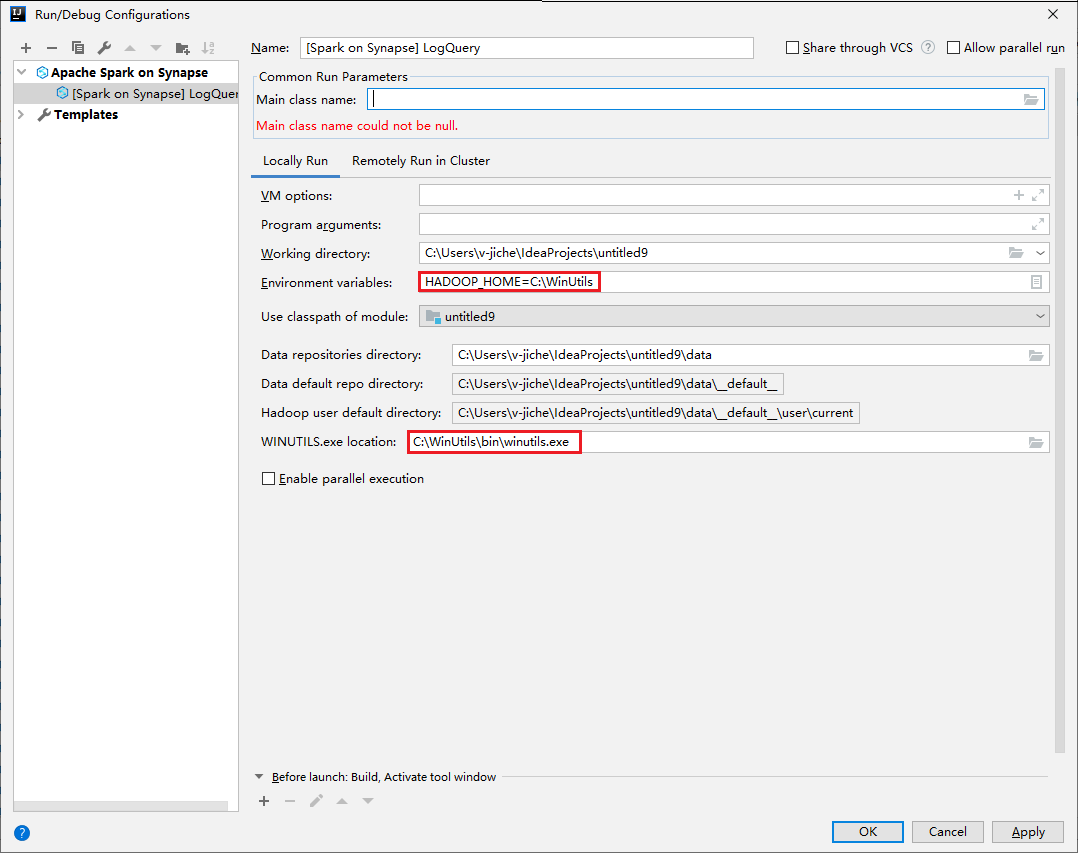Apache Spark is becoming very popular among organizations looking to leverage its fast, in-memory computing capability for big-data processing. This article is for beginners to get started with Spark Setup on Eclipse/Scala IDE and getting familiar with Spark terminologies in general –
Windows binaries for Hadoop versions. These are built directly from the same git commit used to create the official ASF releases; they are checked out and built on a windows VM which is dedicated purely to testing Hadoop/YARN apps on Windows. This page summarizes the steps to install Hadoop 3.0.0 in your Windows. Windows 10; Download. The directory where winutils.exe for Hadoop 3.0.0 is. Hadoop Tutorial; Hadoop is released as source code tarballs with corresponding binary tarballs for convenience.
I didn't find winutils exe file in the hadoop bin folder. I tried below commands $ bin/hdfs namenode -format $ sbin/yarn-daemon.sh start resourcemanager ERROR main util.Shell (Shell.java:getWinUtilsPath(303)) - Failed to locate the winutils binary in the hadoop binary path java.io.IOException: Could not locate executable null bin winutils.exe.
Hope you have read the previous article on RDD basics, to get a basic understanding of Spark RDD.
Tools Used :
- Scala IDE for Eclipse – Download the latest version of Scala IDE from here. Here, I used Scala IDE 4.7.0 Release, which support both Scala and Java
- Scala Version – 2.11 ( make sure scala compiler is set to this version as well)
- Spark Version 2.2 ( provided in maven dependency)
- Java Version 1.8
- Maven Version 3.3.9 ( Embedded in Eclipse)
- winutils.exe
For running in Windows environment , you need hadoop binaries in windows format. winutils provides that and we need to set hadoop.home.dir system property to bin path inside which winutils.exe is present. You can download winutils.exehere and place at path like this – c:/hadoop/bin/winutils.exe . Read this for more information.
Creating a Sample Application in Eclipse –
In Scala IDE, create a new Maven Project –
Replace POM.XML as below –
POM.XML
For creating a Java WordCount program, create a new Java Class and copy the code below –

Java Code for WordCount
import java.util.Arrays;
import org.apache.spark.SparkConf;
import org.apache.spark.api.java.JavaPairRDD;
import org.apache.spark.api.java.JavaRDD;
import org.apache.spark.api.java.JavaSparkContext;
import scala.Tuple2;
public class JavaWordCount {
public static void main(String[] args) throws Exception {
String inputFile = “src/main/resources/input.txt”;
//To set HADOOP_HOME.
System.setProperty(“hadoop.home.dir”, “c://hadoop//”);
//Initialize Spark Context
JavaSparkContext sc = new JavaSparkContext(new SparkConf().setAppName(“wordCount”).setMaster(“local[4]”));
// Load data from Input File.
JavaRDD<String> input = sc.textFile(inputFile);
// Split up into words.
JavaPairRDD<String, Integer> counts = input.flatMap(line -> Arrays.asList(line.split(” “)).iterator())
.mapToPair(word -> new Tuple2<>(word, 1)).reduceByKey((a, b) -> a + b);
System.out.println(counts.collect());
sc.stop();
sc.close();
}
}
Scala Version
For running the Scala version of WordCount program in scala, create a new Scala Object and use the code below –
You may need to set project as scala project to run this, and make sure scala compiler version matches Scala version in your Spark dependency, by setting in build path –

import org.apache.spark.SparkConf
import org.apache.spark.SparkContext

object ScalaWordCount {
def main(args: Array[String]) {
//To set HADOOP_HOME.
System.setProperty(“hadoop.home.dir”, “c://hadoop//”);
// create Spark context with Spark configuration
val sc = new SparkContext(new SparkConf().setAppName(“Spark WordCount”).setMaster(“local[4]”))
//Load inputFile
val inputFile = sc.textFile(“src/main/resources/input.txt”)
val counts = inputFile.flatMap(line => line.split(” “)).map(word => (word, 1)).reduceByKey((a, b) => a + b)
counts.foreach(println)
sc.stop()
}
}
So, your final setup will look like this –
Running the code in Eclipse
You can run the above code in Scala or Java as simple Run As Scala or Java Application in eclipse to see the output.
Output
Now you should be able to see the word count output, along with log lines generated using default Spark log4j properties.
Winutils.exe In The Hadoop Binaries
In the next post, I will explain how you can open Spark WebUI and look at various stages, tasks on Spark code execution internally.
Winutils.exe Hadoop 2.7
You may also be interested in some other BigData posts –
Winutils.exe
- Spark ; How to Run Spark Applications on Windows
